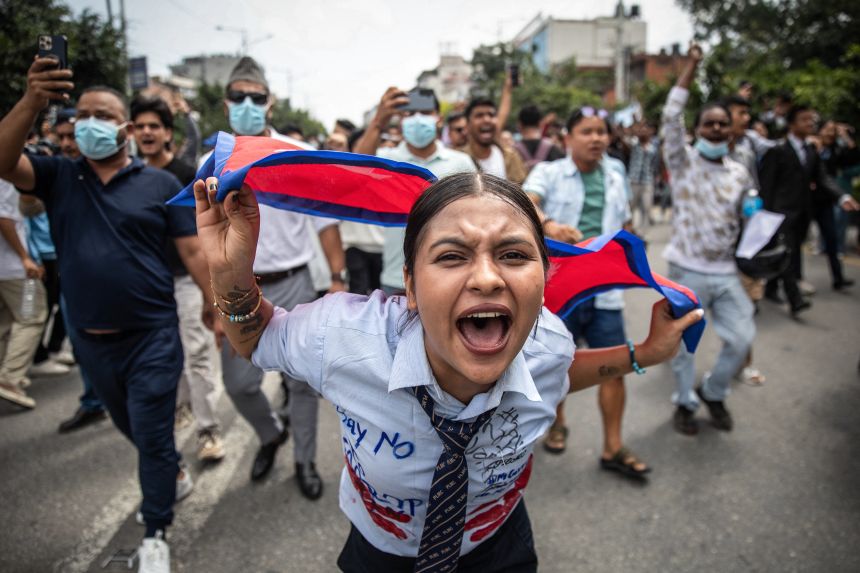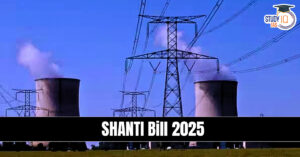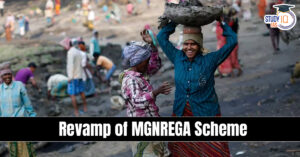Table of Contents
The year 2025 will be remembered as a turning point in Nepal’s history. What started as a reaction to a social media ban soon spiraled into one of the most powerful uprisings in the country’s recent past — the Nepal Protests 2025 Gen Z movement. This wave of anger, led primarily by young people, not only toppled a government but also left a lasting mark on the nation’s socio-political landscape. Among the most shocking incidents was the burning of the Hilton Kathmandu, a symbol of modern luxury, which became an unexpected casualty of the nationwide outrage.
Background of the Protests
The trigger for the unrest was the government’s decision to ban 26 social media platforms, including Facebook, WhatsApp, YouTube, and Instagram. Officials claimed the ban was due to these platforms failing to register with Nepal’s Ministry of Communication and Information Technology. However, critics and protesters alleged that the ban was a deliberate attempt to suppress anti-corruption voices and silence dissent.
Nepal has one of the highest rates of social media use per capita in South Asia. For Gen Z, social platforms are not only entertainment hubs but also essential tools for education, activism, and entrepreneurship. Hence, the ban felt like an attack on freedom of speech and digital rights.
What Triggered the Gen Z Protest in Nepal?
The Gen Z protest Nepal erupted after the government abruptly banned 26 major social media platforms, including Instagram, Facebook, WhatsApp, and YouTube. The move was justified as a regulatory requirement, but for the youth — who live, learn, and mobilize online — it felt like censorship.
However, the protests were not only about the internet. For years, Nepalese youth had been frustrated by corruption, nepotism, and lack of opportunities. The ban became the spark that ignited a much larger firestorm.
How the Movement Escalated
Initially, the demonstrations focused on revoking the social media ban. But as thousands of young Nepalis took to the streets of Kathmandu and other major cities, the protests quickly evolved into a wider anti-corruption and anti-establishment movement.
- Protesters stormed and set fire to parliament buildings and political party headquarters.
- The residences of several prominent leaders, including former Prime Minister Sher Bahadur Deuba, were attacked.
- The government’s violent response, which included tear gas, water cannons, rubber bullets, and live ammunition, further inflamed public anger.
- Casualties mounted: at least 22 people killed and nearly 200 injured in clashes.
The unrest exposed deep-rooted dissatisfaction with political corruption, unemployment, and the extravagant lifestyles of political elites compared to the struggles of ordinary citizens.
PM Oli’s Resignation
Facing nationwide outrage, Prime Minister KP Sharma Oli resigned. His office stated that the move was intended to “pave the way for a constitutional solution” to the crisis. However, analysts note that his resignation was less about political reconciliation and more about the collapse of public trust in the ruling establishment.
With Oli stepping down and several ministers reportedly in hiding, Nepal now faces a leadership vacuum. The Nepal Army, led by General Ashok Raj Sigdel, has taken a more prominent role, promising to restore order while also inviting protesters for dialogue.
Why Gen Z is Leading the Movement
The most striking feature of the 2025 protests is the dominant role of Gen Z. This generation, born between the mid-1990s and early 2010s, has become the driving force of Nepal’s political awakening. But why Gen Z?
1. Digital Natives
Gen Z grew up with smartphones, social media, and global connectivity. Their ability to organize, mobilize, and spread information online made them uniquely equipped to challenge the government’s social media ban.
2. Frustration with Corruption
Rampant corruption and nepotism in Nepal’s political system have long disillusioned citizens. Viral hashtags like #NepoKids and #NepoBaby highlighted the lavish lifestyles of politicians’ children compared to the struggles of ordinary youth. For Gen Z, this inequality symbolized the failure of the political class.
3. Unemployment Crisis
Nepal’s youth unemployment rates are high, pushing thousands to migrate abroad for work. Gen Z is particularly affected, with limited opportunities despite having education and skills. As one student protester stated: “Leaders promise one thing during elections but never deliver. They are the cause of so many problems.”
4. Defenders of Free Speech
For Gen Z, the social media ban wasn’t just about apps; it was about their voice, identity, and rights. Cutting access to digital platforms felt like cutting off their lifeline to education, activism, and global conversations.
5. Symbolic Inspiration
The resurfacing of a viral video of Abiskar Raut, a school head boy who once delivered a passionate speech about unemployment and corruption, gave protesters a symbolic rallying figure. His words about youth being the “torchbearers of change” echoed across social media during the protests.
Impact on Nepal’s Political Landscape
The Gen Z protests have already caused significant shifts:
- Collapse of Government Leadership: PM Oli’s resignation leaves Nepal in political limbo.
- Rise of Youth Politics: The protests demonstrated the potential power of youth-led activism. Figures like Kathmandu’s Mayor Balen Shah have openly supported the movement, potentially signaling new leadership dynamics.
- Increased Role of Military: The Nepal Army’s statement about ensuring order raises concerns about militarization of politics.
- Global Attention: Nepal’s protests are being closely watched by regional powers like India and China, both of whom have strategic interests in the Himalayan nation.
Challenges Ahead
While the movement is powerful, it faces certain challenges:
- Lack of Centralized Leadership: Unlike traditional revolutions, these protests are largely decentralized, making negotiation and policy changes difficult.
- Risk of Escalation: If demands remain unmet, violence could spiral further, destabilizing Nepal’s fragile democracy.
- Economic Disruption: Tourism, trade, and pilgrimage (such as Indian pilgrims to Kailash Mansarovar) have already been disrupted by airport closures and curfews.
- Balancing Army Involvement: The army’s growing presence could either stabilize or further inflame tensions.
Conclusion
The 2025 Nepal Gen Z protest is more than just a youth rebellion—it is a generational movement demanding accountability, transparency, and a future free of corruption. The resignation of PM Oli marks a turning point, but the real question remains: Can Nepal’s political system respond to the demands of its youth?
As the country stands at a crossroads, one thing is clear—Gen Z has shown that they are no longer silent spectators. They are the storm that has swept Nepal into a new era of political awakening.


 SHANTI Bill 2025: India Opens Nuclear Se...
SHANTI Bill 2025: India Opens Nuclear Se...
 Revamp of MGNREGA Scheme 2025
Revamp of MGNREGA Scheme 2025
 National Energy Conservation Awards 2025
National Energy Conservation Awards 2025

























